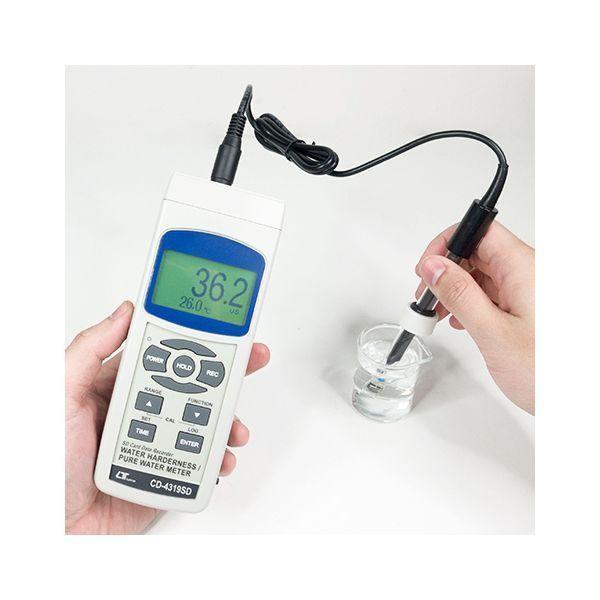
หลักการทำงานของฟังก์ชั่นวัดค่าความกระด้างในน้ำของเครื่องLutron CD-4319sd
เรามีเคส CD-4319SD ที่ลูกค้าซื้อไปเพื่อวัดค่าความแข็ง ในน้ำ ลูกค้าใช้วัดปริมาณน้ำในโรงพยาบาล เพื่อเปรียบเทียบปริมาณน้ำก่อนและหลังใช้ ผ่านวิธีการไทเทรตเพื่อหาค่าความแข็ง ซึ่งค่าที่เครื่องCD-4319sd วัดได้ค่าไม่ตรงกับค่าน้ำที่วัดด้วยการไทเทรต
ปัญหาที่ทางลูกค้าพบเจอ
ค่าน้ำของลูกค้า Ec=0.279ms. Tds=184ppm Hd=139ppm เมื่อวัดด้วย cd-4319sd ส่วนน้ำที่ลูกค้าส่งไปให้ lab ทำการไทเทรต Hd=2ppm ซึ่งค่าที่ได้จะแตกต่างกันมาก
รายละเอียดของการไทเทรตดังนี้
1.เตรียมน้ำตัวอย่างโดยใช้ Eriochrome black T 3 ml
2.ไทเทรตด้วย EDTA 0.01N เติมต่อเพื่อรอการเปลี่ยนสี
3.ความแข็งรวม = EDTA มล.* 20 หน่วย ppm
คำตอบที่ได้จากทางโรงงานผู้ลิตเครื่องมือ
LT hardness value is converted from CD reading value.
ค่าความกระด้างของน้ำที่เครื่องทำการวัดค่าเป็นการแปลงค่าจาก Conductivity
Conversion of conductivity and hardness formula
Please refer to google conductivity and hardness conversion
Please use "google search" for related information
The TDS-conductivity conversion factor for common salt is 0.5.
The hardness measurement function cannot be corrected. (Hardness value conversion of conductivity value)
To correct the hardness value, first use CD-14 to correct the conductivity value (1413 uS)
Corrected hardness value = 707 PPM
Due to hardness value = conductance (uS) x 0.5
FROM GOOGLE
What is the relation between TDS and conductivity?
How do I convert EC to TDS?
Answer: To obtain an approximate sodium chloride TDS
value, multiply the EC reading (in microSiemens/cm) by
1000 and divide by 2. To get an EC value, multiply the ppm
reading by 2 and divide by 1000. Thus, if your EC is 1:
1*1000/2= 500 ppm. Sim

Mr. Thanasarn Phuangmaprang
Service Section